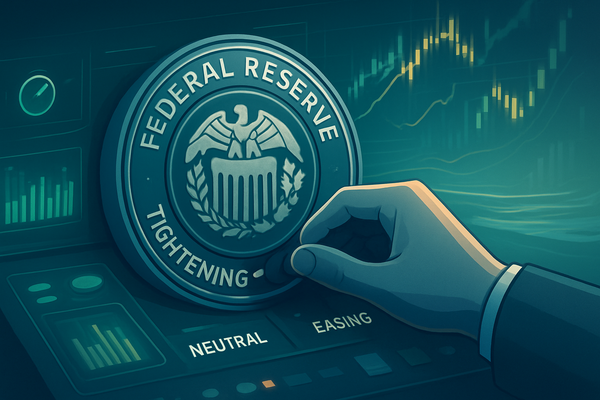Congressional Crossroads: How Legislative Action Shapes Market Fortunes

In the dynamic arena where politics meets finance, the ebb and flow of congressional votes and legislative progress serve as powerful currents, steering the course of stock market movements and profoundly influencing investor confidence. As of November 10, 2025, the ongoing legislative landscape continues to demonstrate how the intricate dance of policy-making in Washington D.C. can directly translate into significant shifts in market valuations, sector performance, and the overall economic outlook. From sweeping tax reforms to targeted industry regulations, political decisions are not merely headlines; they are fundamental drivers that either fuel optimism or spark uncertainty across global financial markets.
The immediate implications of legislative action are often felt through increased market volatility as investors grapple with potential changes to the operating environment for public companies. A decisive vote, whether for or against a critical bill, can trigger immediate reactions, with certain sectors experiencing rapid gains or losses. This direct correlation underscores the necessity for market participants to closely monitor the legislative calendar, understanding that every debate, committee hearing, and floor vote carries the potential to reshape the financial landscape.
The Nexus of Policy and Prosperity: Dissecting Legislative Impact
The influence of political decisions on market confidence is multifaceted, extending across various dimensions of the economy. At its core, legislative progress dictates the regulatory environment, fiscal policies, and specific industry interventions that directly impact corporate profitability and investor sentiment. When Congress considers new laws, such as those related to environmental standards, antitrust enforcement, or infrastructure spending, companies must assess how these changes will affect their operational costs, revenue streams, and competitive standing.
Historically, the timeline of legislative action often begins with policy proposals, moves through committee debates and amendments, and culminates in floor votes in both the House and Senate, eventually requiring presidential assent. Key players in this process include individual members of Congress, party leadership, influential lobbyists representing various industries, and the Executive Branch. Initial market reactions to legislative proposals can be speculative, with sectors potentially affected by the proposed changes seeing early price movements. For example, discussions around stricter data privacy laws might see technology giants like Apple (NASDAQ: AAPL) or Meta Platforms (NASDAQ: META) experience shifts as investors weigh the costs of compliance or potential fines. Conversely, legislation offering tax credits for renewable energy could boost companies like NextEra Energy (NYSE: NEE).
The impact of legislative uncertainty is particularly pronounced. Periods of legislative stalemate or partisan gridlock, such as a potential government shutdown, often lead to increased market volatility as investors become wary of the economic disruption and delayed policy implementation. However, the resolution of such impasses, like a Senate vote to advance a funding bill, can trigger significant market rallies as political risk premiums unwind and investor optimism returns, refocusing attention on underlying economic fundamentals.
Winners and Losers: Corporate Fortunes Tied to Capitol Hill
Legislative decisions inevitably create a landscape of winners and losers within the corporate world, directly impacting their financial health and stock performance. Companies operating in heavily regulated sectors, such as finance, healthcare, and energy, are particularly susceptible to the whims of legislative changes. For instance, deregulation in the banking sector, similar to the Financial Services Modernization Act of 1999, which repealed parts of the Glass-Steagall Act, allowed financial conglomerates like JPMorgan Chase (NYSE: JPM) and Bank of America (NYSE: BAC) to expand their services and merge, potentially boosting their profitability and market capitalization. Conversely, increased regulation can impose significant compliance costs, squeezing profit margins for these same institutions.
Industries that receive direct government support or subsidies stand to gain substantially from favorable legislation. The CHIPS and Science Act, for example, designed to bolster domestic semiconductor manufacturing, directly benefits companies like Intel (NASDAQ: INTC) and Micron Technology (NASDAQ: MU) by providing financial incentives for building and expanding fabrication plants within the United States. This can lead to increased investment, job creation, and ultimately, higher stock valuations as their competitive position is strengthened.
Conversely, companies that face new taxes, tariffs, or stringent environmental regulations might see their profitability curtailed. Legislation imposing tariffs on imported goods, while potentially benefiting domestic producers in the short term, can increase costs for companies relying on global supply chains, such as various retailers or manufacturers. Similarly, heightened environmental standards could necessitate significant capital expenditures for energy companies like ExxonMobil (NYSE: XOM) or utility providers, impacting their bottom line and potentially leading to a re-evaluation of their stock by investors.
Broader Implications and Historical Echoes
The influence of congressional votes extends far beyond individual companies, often shaping broader industry trends and creating ripple effects across the economy. A significant legislative shift can redefine competitive landscapes, accelerate technological adoption, or even alter global trade dynamics. For example, a push towards renewable energy through legislative mandates and incentives not only benefits green energy companies but also pressures traditional fossil fuel industries to innovate or diversify.
Regulatory and policy implications are profound. New laws can establish precedents for future governance, affecting everything from labor practices to data security. The Emergency Economic Stabilization Act of 2008 (TARP), which authorized the government to purchase troubled assets from financial institutions, showcased a significant governmental intervention aimed at preventing a systemic collapse. This act, along with the Auto Industry Financing and Restructuring Act of 2008, which bailed out major U.S. automakers, set a historical precedent for government intervention in times of severe economic distress, signaling a willingness to protect critical industries, which can stabilize markets but also raise questions about moral hazard.
Comparing current legislative developments to historical events provides valuable context. The market's reaction to the 2016 US Presidential Election, where initial uncertainty surrounding Donald Trump's victory quickly gave way to a rally in bank stocks due to anticipated deregulation, illustrates how market sentiment can rapidly pivot based on perceived policy directions. Similarly, the volatility following the Brexit vote in 2016 demonstrated how profound political decisions can create immediate market disruptions due to uncertainty, even if markets eventually adjust to new realities. These historical parallels underscore the market's sensitivity to political stability and policy clarity.
The Road Ahead: Navigating Legislative Uncertainty
Looking ahead, the interplay between congressional votes and market movements will remain a critical factor for investors. In the short term, upcoming legislative sessions, particularly those focused on budget allocations, debt ceilings, or critical infrastructure projects, will likely introduce periods of heightened market volatility. The resolution of these debates, or conversely, their continued stalemate, will dictate immediate market sentiment and sector-specific performance. Companies will need to remain agile, ready to adapt their strategies to evolving regulatory frameworks and fiscal policies.
Long-term possibilities include the potential for transformative legislation that could reshape entire industries. For instance, comprehensive data privacy laws or significant antitrust actions could force tech giants to reconsider their business models, while continued investment in green technologies could accelerate the transition to a sustainable economy. These long-term trends present both significant market opportunities for innovative companies and formidable challenges for those resistant to change. Strategic pivots, such as diversification, increased lobbying efforts, or technological investments, will be crucial for companies seeking to thrive in a politically influenced market.
Potential scenarios range from a period of legislative harmony leading to economic stability and growth, to persistent political gridlock that could stifle innovation and investment. Investors should anticipate that legislative outcomes will continue to drive narratives around economic growth, inflation, and corporate earnings. The emergence of new market opportunities in sectors favored by government policy, or challenges for those facing increased scrutiny, will define the investment landscape in the coming months and years.
Conclusion: A Continuous Dialogue Between Policy and Portfolio
In conclusion, the intricate relationship between congressional votes, legislative progress, and stock market movements is undeniable and enduring. The ability of political decisions to directly affect market confidence through policy changes, fiscal measures, and regulatory shifts makes Capitol Hill a constant focal point for investors and businesses alike. Key takeaways from this dynamic interaction include the understanding that legislative clarity often breeds market stability, while uncertainty can fuel volatility.
Moving forward, the market will continue to assess legislative developments through the lens of their potential impact on corporate profitability, economic growth, and overall risk perception. Investors should remain vigilant, closely monitoring legislative agendas, understanding the potential implications for specific industries and companies, and recognizing that political risk is an inherent component of modern financial markets. What investors should watch for in the coming months are not just economic indicators, but also the progress of key bills, the rhetoric from influential lawmakers, and the outcomes of critical votes, as these will undoubtedly continue to shape the financial landscape and the trajectory of public companies.
This content is intended for informational purposes only and is not financial advice



